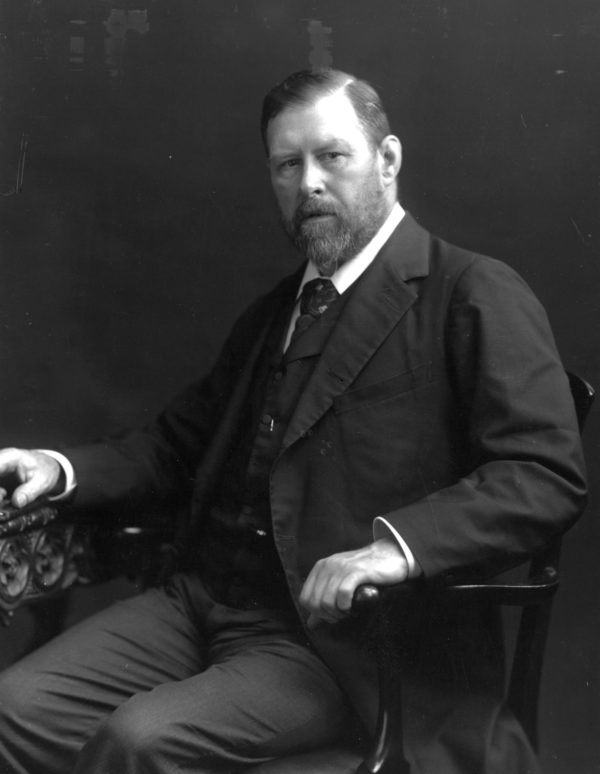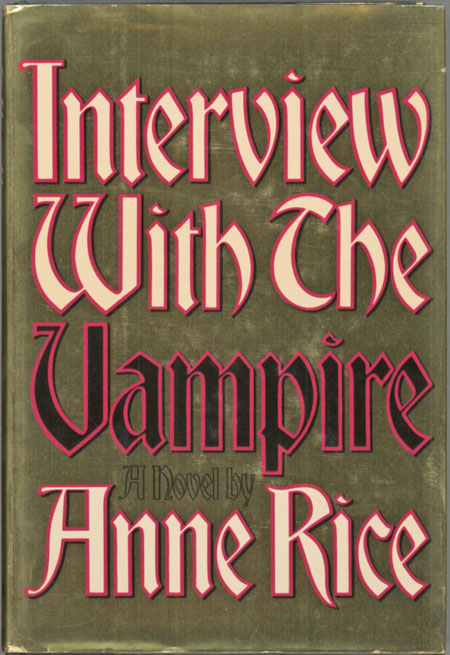Asteroid Profile: Lameia, the Ghoul Next Door, Part I
Lamia is a figure from classical Greek myth, originally a Queen of Libya who caught Zeus’ roving eye, a not uncommon occurrence. Their affair was of some duration and produced several children, until Zeus’ wife Hera discovered his infidelity, and flew into a jealous rage, as was her wont. Unable to truly punish her divine husband, Hera was typically vindictive toward his paramours, but the penalty she devised for Lamia was exceptionally cruel. The Queen of Heaven forced Lamia to eat her own children, an act which drove her rival insane and transformed her into a night-roaming monster who fed on the blood of infants. (Hera also cursed her with insomnia, though Zeus, perhaps as a parting gift for services rendered, kindly granted her the power to remove her eyes so she could get some rest.)
In some versions of her story, Lamia becomes quite feral, seducing beautiful young men and then tearing them to pieces to feed on their flesh after her lust had been sated. The similarity to Lilith and the succubus demon is obvious, and Lamia joins the ranks of mythic (we hope!) creatures who are among the earliest progenitors of the modern vampire, known for its nocturnal rambles and voracious bloodlust, as well as acquiring a reputation for extreme seductive powers. Like the vampire, Lamia is a shapeshifter, though the form she most commonly assumes is not a bat or wolf, the vampire’s preferred alter egos, but a serpent, the better to bite you with, my dear!
The placement of asteroid Lameia (an alternate spelling, with the asteroid specifically named for this mythic creature) in the charts of individuals for whom the theme of vampirism has been prominent seems to validate its identification with the undead bloodsucker.

The first modern vampire story was penned by Dr. John Polidori, the poet Byron’s personal physician and sidekick. Traveling in Europe in 1816, the pair hosted fellow literati Percy Bysshe Shelley and his fiancé Mary Wollstonecraft Godwin for a wild, stormy, three-day bacchanal at the Villa Diodati in Switzerland. The group devised ghost stories to amuse themselves, and from this productive exercise there eventually emerged both Mary Shelley’s novel “Frankenstein” and Polidori’s short story, “The Vampyre”, whose main character Lord Ruthven was loosely based on Byron himself.
Published in 1819, “The Vampyre” was originally attributed to Lord Byron, but both men later admitted authorship by Polidori. Born 7 September 1795, John Polidori’s natal Lameia at 11 Libra is trine Saturn at 13 Gemini, appropriate for the good doctor’s most enduring career legacy. Saturn/Lameia also represents the foundational nature of the work, as the first vampire tale in English. The seduction and subsequent slaughter of virgins forms a major plot point of the story, and Lameia is also semisquare Mars at 23 Leo and exactly sesquiquadrate Pluto at 26 Aquarius. This tag team incorporates the themes of lust and seduction (Mars), scandal, taboo and murder (all Pluto).
“The Vampyre”’s popularity soon spurred imitators, most notably in the penny dreadful series “Varney the Vampire, or, the Feast of Blood”, published weekly from 1845-47, co-authored by James Malcolm Rymer and Thomas Peckett Prest, though Rymer is the writer most associated with the work. Their literary output is prodigious; when aggregated into book form in 1847, “Varney” ran to 232 chapters and some 667,000 words! “Varney” makes poor reading today, but it was instrumental in establishing a number of tropes in the genre, including being the first to reference the vampire’s prominent canines and manner of feeding, passing through a window to attack a sleeping victim, and the possession of hypnotic power and superhuman strength. “Varney” also continued the tradition of an aristocratic antihero, with Sir Francis Varney the protagonist of the story.

Born 1 February 1814, James Malcolm Rymer’s natal Lameia at 12 Cancer is exactly inconjunct his 12 Aquarius Sun, and forms a Yod, or Finger of Destiny, with a sextile to Jupiter at 8 Virgo, also inconjunct the Sun at its Apex, identifying Rymer personally (Sun) with the vampire theme (Lameia) and granting enduring fame (Jupiter). A second Yod is formed with Lameia’s inconjunct to Neptune at 17 Sagittarius, ruler of fantasy and creativity, which with the Sun places Lameia on its Apex. This “doubly fated” signature helps to explain “Varney”’s rise from the pack of similar sensationalist literature of the time, most of which has been forgotten.
Another crucial turning point in the development of the vampire genre came in 1872 with the publication of Irish author Sheridan Le Fanu’s novella “Carmilla.” Its title character is the first female vampire in literature, and the work features lesbian overtones and the concept of repeat attacks with gradual wasting of the victim. Carmilla travels from estate to estate, entreating hospitality and assistance by means of some ruse, then preying on the householders’ daughters, until they succumb and she moves on to the next. Carmilla retains her incognito during successive attacks by a series of anagrammatic respellings of her name, calling herself also Mircalla and Millarca. Like “Varney”, but not as verbosely, “Carmilla” was also serialized initially, in “The Dark Blue” literary magazine, then included in Le Fanu’s short story collection “In a Glass Darkly.” Her original identity, as the 17th century Countess Karnstein, extends the tradition of vampires as aristocrats, and the Styria, Austria setting for the novella moves the action toward Central Europe for the first time.

Born 28 August 1814 at 5:30 AM LMT in Dublin, Ireland (Rodden Rating B), Sheridan Le Fanu has Lameia at 7 Virgo, in a powerhouse conjunction with the Sun, Mars and the Ascendant, at 4, 5 and 8 Virgo respectively. The lesbian overtones to the work can be attributed to the presence of asteroid Sappho in the mix, named for the ancient Greek lesbian poet, front and center at 9 Virgo. Lameia is also broadly conjoined Jupiter at 16 Virgo, the source of Le Fanu’s reputation and fame.
This middle-European aristocrat theme was embraced and embroidered in Bram Stoker’s “Dracula”, the granddaddy of all vampire fiction, published a quarter century later, in 1897. Modern scholarship asserts that Stoker based his antihero in part on a 15th century Prince of Wallachia, Vlad III the Impaler, who ruled Transylvania with an iron fist and was noted for his exceptional cruelty. The seminal work of the genre, “Dracula” continues to fascinate audiences globally to this day, translated into nearly thirty languages, with more than 200 films featuring the Dracula character (second only to Sherlock Holmes). Stoker’s Transylvania setting and title of “Count” for his bloodsucker set the seal on the traditional vampire’s elevated social status and continental origins, but Stoker added many of the details we now consider de rigueur for the vampire, including repulsion by crosses and garlic, the fatality of exposure to sunlight, the necessity of sleeping in one’s native soil, the ability to shapeshift into the form of a bat or wolf, and dissolve into a mist. Stoker’s use of then-cutting-edge technologies such as telegrams, shorthand, typewriters and transfusions, and exhaustive research into actual train and shipping schedules of the time, created an atmosphere of modernity and verisimilitude to the novel which made it eerily credible to current audiences upon release.

Born 8 November 1847, Bram Stoker’s natal Lameia at 24 Pisces is stationary, turning direct two days later. Stationary points carry extra weight in the horoscope, granting power and import far beyond their usual scale, so the theme of vampirism is deeply embedded in Stoker’s psyche. Lameia is also in a broad Grand Trine with the Sun at 15 Scorpio and Jupiter, planet of fame and success, at 20 Cancer, and is closely inconjunct asteroid Transylvania at 25 Libra, the opening setting for Stoker’s novel, as well as its final scenes.
When “Dracula” was published on 26 May 1897, asteroid Lameia at 6 Aquarius is again at station, this time about to turn retrograde, making its subject a focal point of the time. In a T-Square with Venus at 1 Taurus and Mars at 4 Leo, its placement represents the romanticized (Venus) Gothic atmosphere of the novel, as well as its sanguinary aspects (Mars). Also trine the Sun at 5 Gemini and inconjunct Jupiter at 1 Virgo, Lameia assures high visibility (Sun) and lasting fame (Jupiter) for Stoker’s masterwork.

Despite “Dracula”’s popularity, or perhaps because of it, vampire literature languished in relative obscurity for three quarters of a century, with no notable contributions to the genre. There were a number of unique and innovative short stories published during this time, but nothing enduring of major length. Until a pair of remarkable women revived it with a vengeance in the late 1970s. Born less than a year apart, Anne Rice and Chelsea Quinn Yarbro debuted their vampire creations within two years of each other, with Rice’s “Interview with the Vampire” published in 1976, and Yarbro’s “Hotel Transylvania” in 1978.
“Interview with the Vampire” was initially greeted with skepticism by critics and readers, but quickly gained a cult following that propelled it to bestseller status. Rice dragged the vampire fully out of the closet whose door Le Fanu’s “Carmilla” had barely cracked open. Gay, bisexual, pansexual, Rice’s vampire lovers Louis and Lestat hummed with eroticism, and took readers on a panoramic saga that extended from the 1700s to present day. Rice also added the child vampire character Claudia, another taboo subject others had avoided, and followed up “Interview”’s success with “The Vampire Lestat” in 1985 and “Queen of the Damned” in 1988.

Born 4 October 1941, Anne Rice’s writing career has run the gamut from erotic literature to Christian themes, but it is her vampire novels for which she is best known. Natal asteroid Lameia at 2 Cancer squares asteroid Riceia (closest to Rice) and the Sun at 3 and 10 Libra, strongly identifying her with the vampire. Lameia also trines Mercury, ruling writing, at 6 Scorpio, and squares Neptune, ruler of fantasy, at 27 Virgo; the erotic content and gay theme to her works can be seen in the square to asteroid Eros at 29 Virgo, named for the deity which in Hellenistic Greece was the acknowledged patron of homosexual unions.

When “Interview with the Vampire” was published on 5 May 1976, asteroid Lameia at 10 Taurus conjoined Venus, Jupiter and the Sun at 3, 9 and 15 Taurus, all squaring asteroid Riceia at 12 Aquarius. Lameia also opposes Uranus at 4 Scorpio, for the original, controversial take Rice presented on vampirism in her book. Riceia is further involved in a Grand Trine with Mercury at 3 Gemini and Pluto at 9 Libra, symbolizing the transformation (Pluto) which this book (Mercury) would make in her life (Riceia).
Not as well known, but deserving of plaudits, is Chelsea Quinn Yarbro, whose series of books on the protracted afterlife of her vampiric Count de Saint-Germain comprises more than two dozen novels and spans almost a millennium of history. Yarbro’s protagonist is based in part on an actual historical figure, the 18th century Comte de Saint-Germain, a European adventurer with mysterious origins and an interest in alchemy and the occult. Yarbro avers that this person was an immortal vampire, and traces his saga from his origins in ancient Rome to the present day (although the novels themselves are not written in chronologic order). Yarbro’s interpretation might be described as a “vampire with a heart of gold,” more interested in sharing and intimacy, and helping damsels in distress, than indiscriminate bloodletting; when Saint-Germain does kill, he does so with the best of intentions, typically to rid the world of an evil greater than himself.

Chelsea Quinn Yarbro was born 15 September 1942, with natal Lameia at 7 Virgo closely conjoined Venus at 6 Virgo, and squared Uranus with Saturn at 4 and 12 Gemini. This may be the source of her polished, cultured (Venus) Count, more focused on romance (also Venus) than bloodlust, something which was certainly a unique, original (Uranus) perspective on the theme. The longevity of the series (begun in 1978, Yarbro was still actively contributing to her vampire’s saga as recently as 2014) and its importance to her career can be seen in the square to Saturn.
Of course no review of vampire literature would be complete without the works of Stephenie Meyer, whose “Twilight” series dominated the genre in the new millennium. Building on the Yarbro perspective, Meyer’s vampires flout much of the canon of bloodsucker tradition. Far from being destroyed by sunlight, they sparkle when exposed to it! The romance of undying love is again the focus, rather than mindless exsanguination, and the series features the supernatural love triangle of vampire Edward and werewolf Jacob as they struggle for the soul and affections of human heroine Bella. “Twilight” was published in 2005, followed by “New Moon” in 2006, “Eclipse” in 2007 and “Breaking Dawn” in 2008. In aggregate the series has sold more than 100 million copies, with translation into 37 languages, making Meyer one of the most profitable writers of the decade. And that’s just the books themselves – adapted into 5 theatrical films, the “Twilight” franchise netted some $3.34 billion worldwide in box office sales, by far the most lucrative vampiric property to date.

Born 24 December 1973, Stephenie Meyer’s natal Lameia at 11 Libra conjoins Pluto at 6 Libra, a sign of the huge transformation vampires would make in her life. Lameia is also part of a Grand Trine with asteroid Meyer at 11 Gemini, and asteroid Stefani, Venus and Jupiter at 3, 9 and 12 Aquarius. This pattern becomes a Kite with Meyer’s opposition to natal Neptune at 8 Sagittarius, and together this shows fame and success (Jupiter) for a creative project (Venus) by the author (Stefani, Meyer), based in fantasy (Neptune). Additionally, Lameia is peripherally involved in a tight T-Square of Sun at 2 Capricorn opposed Saturn at 1 Cancer, with asteroid Stephania at 1 Libra on the fulcrum, though the orbs here for Lameia’s inclusion are very wide.
When “Twilight” was published on 5 October 2005, asteroid Lameia at 13 Scorpio joined a T-Square, on the fulcrum, with squares to Saturn conjunct asteroid Stephania at 9 and 19 Leo, and Neptune at 14 Aquarius. The series’ longevity and stability, as well as its fiscal soundness, can be seen in Saturn’s placement, while its loyal, almost fanatical fanbase is attested by Neptune.

Lameia’s effect in propelling writers who were instrumental in crafting the modern image of the vampire is apparent; in Part Two of this article, we’ll take a look at its impact on the actors who brought that image to undead life on the screen.


4 comments, add yours.
Laurien
Fascinating! Loved all the historical info and am looking forward to Part II! Had to look up Lameia in my own chart and it’s square my Moon and trine Neptune. I guess at some point I should tear myself away from astrology books and read some of the classics you have written about here! Thanks Alex!
char555
Oh Alex! This looks like such an interesting piece! But I am very arachnophobic and quite simply can’t stay on your ssite for more than a few minutes… seriously… bye now…
loel
Love it with it all ties to Halloween esp. the greek with Lamia. Will have to go to astrodienst to see where my Lamia is placed. I have either dressed up as a gypsy fortune teller or vampira all of my early adult life (when I had a smoking hot bod) because of the sexy overtones to both genres.
Emma Esperanza Acosta
Apreciado amigo, tuve un susto muy grande al leer su artículo y ver todas arañas en la pantalla, por favor, pensé que mi computador se había dañado. Prefiero no verlas. Gracias